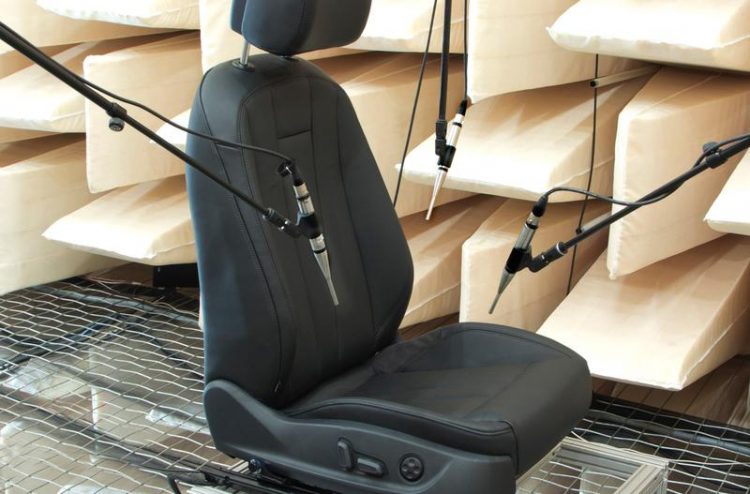More objective than human hearing

The Fraunhofer IDMT offers procedures for the end-of-line inspection of car parts, such as motors for seats, for the sake of automated quality analysis by means of airborne sound measurement.
In industrial production, it is crucial that the machines work and that the product does not have any defects. The production process is therefore continuously monitored. By humans, but also by more and more sensors, cameras, software and hardware.
In most cases, machine-based automated testing is based on visual or physical criteria. Only people also use their ears naturally: if something sounds unusual, a person switches the machine off for safety. The problem is this: Everyone perceives noises somewhat differently. Whether something goes wrong is therefore rather a subjective feeling and presents an increased susceptibility to error.
Training with millions of data records
The Fraunhofer Institute for Digital Media Technology IDMT develops cognitive systems that accurately identify faults based on acoustic signals. The technological approach combines intelligent acoustic measurement technology and signal analysis, machine learning as well as data-safe, flexible data storage.
“We integrate the intelligence of listening into the industrial condition control of machines and automated test systems for products,” explains Steffen Holly of IDMT’s “Industrial Media Applications” business unit. Once they have been trained, cognitive systems can hear more objectively than human hearing: instead of two ears, they have, so to speak, many thousands of them at their disposal, in the form of millions of neutral data records. Initial pilot projects with industry are already under way. The researchers have been able to detect up to 99 percent of the defects purely acoustically.
Assigning sounds distinctly
The scientists identify possible sources of noises and analyze their causes, create a noise model of the environment, and focus their microphones there. “It is ideal to simulate the human ear: it receives sounds through the air,” says Holly. From the total signal, the system calculates out background sounds, such as voices or from a forklift driving by. This is then repeatedly compared with previously determined, laboratory-pure reference noise. With the help of artificial neural networks, the scientists are gradually developing algorithms that are able to detect noises which occur from errors.
“The cleaner the acoustic signal is, the better the cognitive system recognizes deviations,” Holly explains. The technology is so sensitive that it also displays nuances in error intensity and manages complex tasks. An example from the field of automotive production: In modern car seats, a large number of individual motors are installed, with the aid of which the driver can adjust his seat individually. The design of the motors is not the same, their noises are different and they are installed in different places. “In a pilot project with an automotive supplier, our acoustic monitoring system was able to detect all of the error sources perfectly”, Holly reports.
Flexible, secure data storage in the cloud
The Fraunhofer researchers are able to ensure the data security of the collected acoustic signals through user authorizations as well as rights and identity management. An example is the decoupling of real and virtual identities in order to not violate user rights when evaluating the data by different persons. Machines and test systems are usually installed in the production line. The researchers store their acoustic data records in a secure cloud. “We can react very flexibly to changes in the production process and adjust our cognitive system accordingly,” Holly mentions as an additional advantage.
https://www.fraunhofer.de/en/press/research-news/2017/april/more-objective-than-…
Media Contact
All latest news from the category: Information Technology
Here you can find a summary of innovations in the fields of information and data processing and up-to-date developments on IT equipment and hardware.
This area covers topics such as IT services, IT architectures, IT management and telecommunications.
Newest articles

Silicon Carbide Innovation Alliance to drive industrial-scale semiconductor work
Known for its ability to withstand extreme environments and high voltages, silicon carbide (SiC) is a semiconducting material made up of silicon and carbon atoms arranged into crystals that is…

New SPECT/CT technique shows impressive biomarker identification
…offers increased access for prostate cancer patients. A novel SPECT/CT acquisition method can accurately detect radiopharmaceutical biodistribution in a convenient manner for prostate cancer patients, opening the door for more…

How 3D printers can give robots a soft touch
Soft skin coverings and touch sensors have emerged as a promising feature for robots that are both safer and more intuitive for human interaction, but they are expensive and difficult…





















